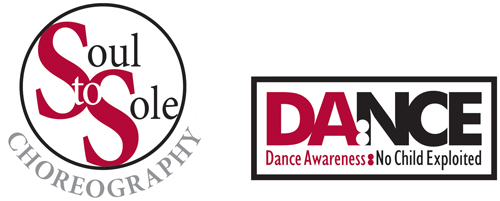Nationally and internationally, there is a wide range of Christ-followers called into
dance ministry, with a wide variety of dance backgrounds. How do we decide who is best prepared to carry on dance ministry? Are the trained dancers in a better position to serve the Church because they move with a stronger technical base? Do they speak with movement language that is more powerful and more beautiful because of their structured technique? On the other hand, does formal training squeeze spontaneity out of dance presentations? Do untrained dancers have more freedom in worship and faith because of their organic movement base, or is this untrained base too awkward to use? Finally, should age restrict movement participation in ministry? In the secular world, dancers have a short life. Does the same philosophy hold true for those who dance in church settings?
The Scripture reveals a God who loves and enfolds His people with movement. The
incarnation of Jesus is a study of God’s movement to humanity—a redemptive dance for all. Dance in the church needs to reflect the same kind of enfolding approach. This is because the physical technique of everyone considered “untrained” is actually refined and “trained” in a different way than those who take formal classes. Dance is different from other artistic forms that require skill. It takes months of practice to learn to master the violin. It takes years of practice to sculpt art. However, everyone has the mastery of refined physical technique because the class occurs everyday. The challenge begins with the assumption that dance training only occurs with formal dance classes. The reality is that the body begins to build an accessible and complete technical base from birth. This technical foundation needs to be recognized and then shaped according to movement intent.
Dance ministry uses the body to give glory to God through worship with power
and purpose. It doesn’t matter whether the movement is simple or if it involves
professionally trained ballerinas with complex technique. What defines its success
should be the clarity of movement communication. That is why Christendom should welcome both trained and untrained dancers (or congregational dancers) as part of a wonderful family. Neither trained nor untrained dancers should be penalized for what they have, or do not have. Rather, both groups share a common resource to help those inside and outside the church to see an embodied faith.
S. B. Savage once wrote, “Dance can bring back more of ourselves with which to
know Christ, and, in a sense, can bring back to us more of Christ.”1 Enfolding believers with formal training, as well as those who have never taken technical dance classes, can facilitate a wider umbrella for dance ministry that communicates the gospel. All ages, training, and genders should develop choreography based from the movement level that they have when they participate in dance ministry. In the best of circumstances, organic dance expression should develop worship movement from the inside out as a visible manifestation of personal inner faith from the choreographer and from the dancers as they move.
When believers and secular on-lookers see both trained and untrained dancers moving with biblical content, choreography with meaning internalizes transcendent truth.“The purpose of bringing form to embodiment . . . is to recognize and live out the truth that form does inform the text and us kinesthetically.”2
The non-verbal language of dance speaks through a physical, technical foundation
that everyone has, everyone can use, and everyone can relate to. Different people will favor different elements of the dance presentations—both from trained and untrained dancers. However, both groups of dancers should have a Spirit-led call to dance, be well-rehearsed, communicate biblical truth through worship and give glory to God. The result presents a faith that is visual, practical, and open to all who are called.
Join me in celebrating the beauty of dance ministry in the world-wide church using a wide array of dancers who love Jesus and whose goal is to communicate the Gospel in a broken world with visual, redemptive faith.
1 Sara Savage, “Through Dance, Fully Human,” in Beholding the Glory: Incarnation Through the Arts, ed. Jeremy Begbie (Grand Rapids, MI: Baker Academics, 2000), 66. Fair use.
2 P. A. Moeller, A Kinesthetic Homiletic—Embodying Gospel in Preaching (Minneapolis: Fortress Press, 1993), 89.
“But whoever lives by the truth comes into the light, so that it may be seen
plainly that what they have done has been done in the sight of God” (John
3:21).
“Dance is the hidden language of the soul.” Martha Graham
PS Recovering from shoulder replacement surgery has put a hold on book publication and the edits I need to do. I am hoping to give you an update on my book next month.

Music and Dance- a soul mixture of pure love. You can feel it, love it, enjoy it and have fun with it. I am impressed with your words dear author.